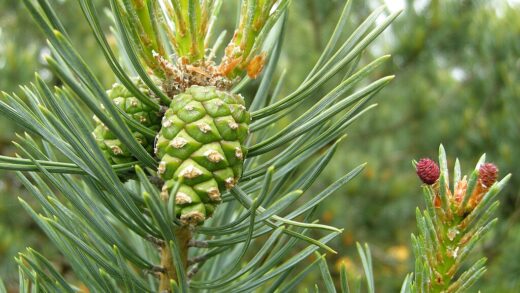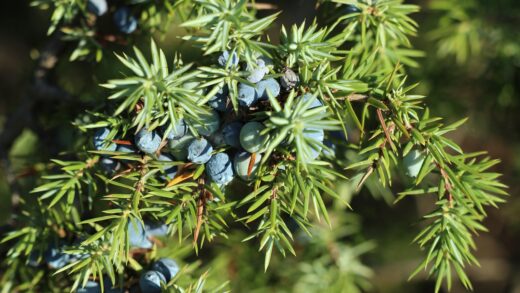Understanding the precise water requirements and mastering the art of irrigation for the peach-leaved bellflower is fundamental to cultivating a plant that is not only healthy and vigorous but also a prolific bloomer. This perennial, while relatively adaptable, has a distinct preference for soil moisture levels that mirror its native woodland and meadow habitats. It thrives in conditions where the soil is consistently moist yet never waterlogged. Achieving this balance is the core challenge and goal of any successful irrigation strategy. Overwatering is a far greater threat than underwatering, as it can quickly lead to fatal root rot, while prolonged drought can cause stress, wilting, and a significant reduction in flowering.
The key to effective watering lies in observing the plant and the soil, and responding to their needs rather than adhering to a rigid, predetermined schedule. Factors such as soil type, climate, rainfall, and the plant’s stage of growth all play a crucial role in determining how much and how often to water. A newly planted bellflower, for instance, will require more frequent attention to help it establish its root system than a mature, well-established clump. Similarly, a plant growing in sandy soil during a hot, dry summer will need more water than one in a heavier loam during a cool, wet spring. A deep understanding of these variables allows for a nuanced approach to irrigation that promotes optimal plant health.
Developing a proper irrigation technique is just as important as the frequency and volume of watering. The most effective method is to deliver water slowly and deeply, directly to the root zone. This encourages the roots to grow deeper into the soil, making the plant more resilient and less dependent on frequent, shallow watering. Techniques like drip irrigation or using a soaker hose are ideal as they minimize water waste through evaporation and reduce the risk of fungal diseases by keeping the foliage dry. This approach ensures that the water is used efficiently and effectively by the plant.
Ultimately, the goal is to create a stable and supportive moisture environment for your peach-leaved bellflower. This involves not only the act of watering itself but also broader garden practices such as amending the soil with organic matter to improve its water-holding capacity and applying mulch to conserve soil moisture and regulate its temperature. By integrating these practices, you can create a robust and resilient garden ecosystem where your bellflowers will not just survive, but truly flourish, rewarding you with their graceful beauty season after season.
Understanding the plant’s basic needs
The peach-leaved bellflower has a moderate and consistent need for water throughout its active growing season, from spring through to late summer. Its preference is for soil that feels like a well-wrung-out sponge – moist to the touch but not dripping wet. This reflects its origins in environments where it would receive regular rainfall but benefit from the excellent drainage provided by sloping ground or loamy woodland soils. The basal rosette of leaves, which is often semi-evergreen, requires access to moisture to remain turgid and healthy, while the tall flowering stems need a steady supply of water to support their growth and the development of numerous blooms.
More articles on this topic
A critical aspect to understand is the plant’s deep intolerance for stagnant water around its roots. The crown of the plant, where the stems emerge from the root system, is particularly susceptible to rot if it remains in constantly saturated soil. This is why excellent drainage is non-negotiable for the successful cultivation of this species. In heavy clay soils that retain a lot of water, the risk of root and crown rot is significantly higher, especially during cool, wet weather or in the winter when the plant is dormant. Therefore, irrigation must always be balanced with the soil’s ability to drain away excess moisture.
During periods of active growth in the spring and flowering in the summer, the plant’s water consumption is at its peak. Insufficient water during these crucial times can lead to several undesirable outcomes. The plant may become stunted, the leaves may wilt or turn yellow, and the flower buds may fail to open or the flowering period may be cut short. Conversely, an established plant can exhibit a surprising degree of drought tolerance for short periods, but its overall performance and appearance will be much better with a consistent supply of moisture.
In the autumn, as the plant begins to enter dormancy, its water requirements naturally decrease. The cooler temperatures and shorter days signal a slowdown in growth, and irrigation should be reduced accordingly. Over the winter, the dormant plant needs very little supplemental water, and in most temperate climates, natural precipitation is more than sufficient. The focus during this period shifts from providing moisture to ensuring that the soil does not become waterlogged.
Irrigation techniques for optimal health
The method you use to water your peach-leaved bellflower can have a significant impact on its health. The most effective technique is to water deeply at the base of the plant, soaking the entire root zone thoroughly. This encourages the roots to grow deep into the soil profile in search of moisture, which in turn makes the plant more stable and more resilient during dry spells. A deep watering session every few days is far more beneficial than a light, daily sprinkle, which only wets the surface of the soil and encourages a shallow, vulnerable root system.
More articles on this topic
Using a soaker hose or a drip irrigation system is an excellent way to achieve this slow, deep watering. These systems deliver water directly to the soil surface at a low pressure, allowing it to be absorbed gradually without causing runoff or compaction. This method is also highly water-efficient, as it minimizes loss to evaporation. Furthermore, by keeping water off the leaves and flowers, it significantly reduces the risk of fungal diseases such as powdery mildew and leaf spot, which thrive in damp conditions.
If you are watering by hand with a hose or watering can, it is important to use a gentle setting and to direct the water at the base of the plant, under the foliage. Avoid using a strong jet of water that can blast away soil, expose the roots, and splash soil-borne pathogens onto the leaves. Take your time to allow the water to penetrate deeply into the soil. A good rule of thumb is to water until the moisture has penetrated at least six to eight inches deep, which is where the majority of the active roots are located.
Overhead watering with a sprinkler should generally be avoided for this particular plant. While it may be convenient for large areas, it wets the foliage, which as mentioned, can promote disease. It is also an inefficient method, as a significant amount of water can be lost to evaporation before it even reaches the ground, especially on warm, windy days. If you must use a sprinkler, do so early in the morning so that the leaves have the entire day to dry out completely in the sun.
Watering schedule and influencing factors
There is no one-size-fits-all watering schedule for the peach-leaved bellflower; the frequency of irrigation must be adapted to a variety of changing factors. The most important guide is the soil itself. Before watering, always check the moisture level by inserting your finger a couple of inches into the soil near the base of the plant. If the soil feels dry at this depth, it is time to water. If it still feels moist, it is best to wait and check again the following day. This simple test prevents the common and damaging mistake of overwatering.
Soil type plays a huge role in determining watering frequency. Sandy soils drain very quickly and will need to be watered more often than heavy clay soils, which retain moisture for much longer periods. A well-amended loamy soil strikes the ideal balance, holding sufficient moisture while allowing the excess to drain away. It is crucial to understand your garden’s specific soil composition to develop an appropriate watering rhythm. Amending your soil with organic matter is the best way to improve its water-holding capacity and reduce the need for frequent irrigation.
Climate and weather conditions are also major influences. During hot, dry, and windy weather, soil moisture evaporates much more quickly, and your plants will need to be watered more frequently. Conversely, during cool, cloudy, or rainy periods, you will need to water much less often, if at all. Pay close attention to the weather forecast and adjust your watering practices accordingly. It is important to remember that a brief summer shower may only wet the surface and might not provide the deep soaking that the plant’s roots require.
The plant’s life stage is another key consideration. Young plants that are not yet fully established have smaller root systems and are more vulnerable to drying out, so they require more consistent and frequent watering. Once a plant is mature and has developed a deep, extensive root system, it will be more resilient and can tolerate short periods of dryness. However, even established plants will benefit from a deep watering during prolonged droughts to keep them looking their best and to support a full flowering display.
Special considerations and problem solving
One of the most common problems related to watering is root rot, which is caused by soil-borne fungi that thrive in anaerobic, waterlogged conditions. The symptoms of root rot can be misleading, as they often include wilting and yellowing leaves, which might be mistaken for signs of drought. However, if the soil is wet and the plant is wilting, root rot is the likely culprit. The best cure is prevention: ensure excellent drainage at the planting stage and avoid overwatering. If a plant is affected, you may be able to save it by carefully digging it up, trimming away any brown, mushy roots, and replanting it in a better-drained location or a container with fresh potting mix.
Mulching is a highly beneficial practice that complements a good watering strategy. Applying a two to three-inch layer of organic mulch, such as shredded bark, compost, or leaf mould, around the base of your bellflowers offers numerous advantages. Mulch helps to conserve soil moisture by reducing evaporation, it keeps the soil temperature cool, and it suppresses the growth of weeds that compete with your plants for water and nutrients. As the organic mulch breaks down, it also improves the soil structure and fertility. Be sure to keep the mulch a couple of inches away from the crown of the plant to prevent it from trapping moisture and causing rot.
Container-grown peach-leaved bellflowers have different watering needs compared to those grown in the ground. The soil in pots dries out much more quickly, especially on warm or windy days, and will require more frequent watering, sometimes even daily during the peak of summer. It is essential to use a high-quality potting mix and a container with adequate drainage holes. Water the container thoroughly until you see water running out of the bottom, and then allow the top inch of soil to dry out before watering again.
Finally, always be observant. Your plants will often give you visual cues about their water status. Wilting is the most obvious sign of water stress, although it is important to note that some plants may wilt slightly in the heat of the afternoon sun as a natural way to conserve moisture, and then perk up again in the evening. If the plant is still wilted in the morning, it is a clear sign that it needs a thorough watering. By learning to read these signs and combining them with the practice of checking the soil moisture, you can provide your peach-leaved bellflowers with the perfect amount of water to keep them flourishing.


















